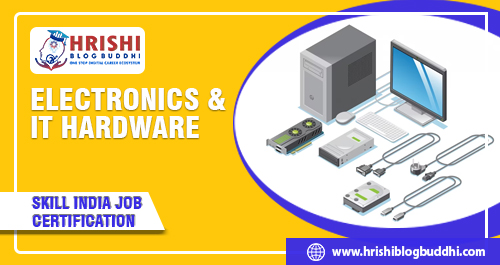MeitY has been granted Rs. 9,720.66 crore in the Union Budget 2021-22. The total budgetary allocation for the ‘Digital India’ programme in 2021-22 is Rs. 6,806.33 crore. MeitY will create a quantum computing applications lab in the country, in conjunction with Amazon Web Services, to speed quantum computing-led research and development and enable new scientific breakthroughs.
Innovation, which is defined as the constant improvement of current items and the blending of these products to produce new commodities, drives the Consumer Electronics business. As a result, many of the gadgets in this market serve many purposes (for example, smartphones can be used as cameras, radios, and so on), and in order to achieve a consistent segmentation, the focus is on their primary function. Increasing technological improvements in consumer electronics such as computers, cellphones, earphones, speakers, and headphones are expected to boost the consumer electronics market’s growth. The application of disruptive technologies like machine learning, artificial intelligence, and the Internet of Things enhances the product’s functionality even further. Over the projection period, increased demand for energy-efficient appliances with a variety of features would raise consumer electronics market share.
Consumer electronics gadgets and devices are becoming an increasingly important element of our daily lives. We want to improve our lives by making them smarter, faster, and easier.
With the introduction of current products and consumer technology, the Consumer Electronics (CE) business is evolving at a rapid pace. Consumers are getting more savvy, and they expect new items to be as efficient as possible. To appeal to today’s consumers, industry participants must be customer-centric and provide seamless and tailored products.
Consumer Electronics Trends – The Indian home appliances and consumer electronics market is predicted to develop at a CAGR of 10% till 2022, according to a PwC analysis. The Make in India initiative has bolstered India’s consumer electronics design and manufacturing industries, and the industry is expected to develop dramatically over the next five years. One of the reasons for the rise in demand and sales of consumer goods and electronics is e-commerce.
Smartphones, wearables, video game consoles, in-home appliances, vehicles, Bluetooth enabled audio equipment, storage devices, and charging stations will be the most successful categories in today’s developing Consumer Electronics Industry. For the overall success of a product, embedded hardware and firmware design for these systems or parts of these systems requires domain and system integration skills.
With a steady growth observed in the consumer electronics industry and IT hardware companies you might think of going into this sector to secure your future or are you still confused with what to choose? MyCareerGurukul is your one stop destination to explore all the career options you have and decide on the appropriate career choice for yourself.
There will be expert counsellors and mentors to guide you throughout and explore your passion and skills. MyCareerGurukul is a one-of-a-kind platform that helps students discover the right career path at the right time, with the necessary coaching and mentorship to help them design their careers successfully. Its headquarters are at Vasai West, Mumbai North.








